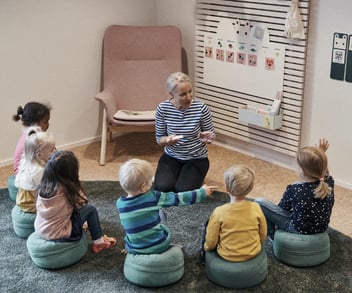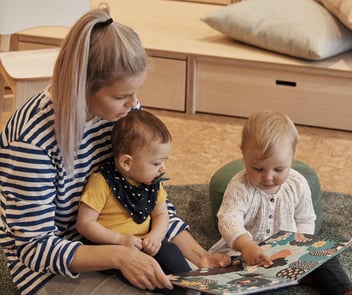Debunking 5 Myths about Finnish Education

In recent years, Finnish education has garnered attention worldwide as a model of success. With its innovative approaches and high student outcomes, many educational experts are looking to Finland for inspiration. However, despite its acclaim, several misconceptions continue to cloud perceptions of the Finnish education system. For educators, policymakers, entrepreneurs, school owners, and principals interested in rethinking education, understanding these myths is crucial. In this blog, we'll unravel the top five misconceptions about Finnish education and shed light on the reality behind this globally respected system.

Myth 1: Children only play and don’t learn
A common misconception about Finnish education is the belief that children spend most of their time playing and not learning. Critics often point to the emphasis on play-based learning in early education as evidence. However, this perspective overlooks the intentional design behind Finland's educational approach.
In Finland, play is not seen as separate from learning but rather as an integral part of cognitive, social, and emotional development. Research shows that play encourages creativity, problem-solving, and cooperation—skills that are foundational for lifelong learning.
Sahlberg’s book Let the Children Play highlights how integrating play into education helps students develop crucial foundational skills like language and math through engaging, low-pressure activities.
Myth 2: Students lack academic proficiency
Another myth suggests that Finnish students lack rigorous academic instruction, resulting in gaps in basic skills. This misconception arises from the perception that Finnish schools prioritize well-being over academics. However, Finnish education effectively balances academic proficiency with student welfare, ensuring strong outcomes in both areas.
Finnish curricula are thoughtfully designed to cover essential academic content. Subjects like math, science, language, and arts are taught comprehensively, with teachers using various methods to engage different learning styles. The emphasis on deep understanding over rote memorization means students develop critical thinking skills alongside academic knowledge. Finland’s Famous Education System demonstrates how this balance between well-being and academic rigor contributes to strong educational outcomes.
This holistic approach is reflected in Finland's consistent performance on international assessments like PISA, where Finnish students excel in reading, mathematics, and science. These results highlight not only their academic competence but also the effectiveness of Finland's educational philosophy in cultivating well-rounded learners.
Myth 3: Children struggle with discipline
Some critics argue that Finnish students struggle with discipline and the ability to focus due to less structured classroom environments. They believe that the lack of formalized seating arrangements and emphasis on movement leads to inattentive behavior. But this couldn't be further from the truth.
Finnish educators understand that children benefit from breaks and physical activity, which enhance concentration and engagement. Schools incorporate regular intervals for movement, allowing students to refresh and return to tasks with renewed focus. Classrooms are dynamic spaces where movement is encouraged as part of the learning process, as outlined in Pasi Sahlberg’s research on Finnish classrooms.
Furthermore, Finnish teachers cultivate student self-regulation and responsibility. Rainio's (2010) case study examines how play-based pedagogy enhances children's agency in educational environments. Research indicates that this method not only keeps children attentive in class but also equips them for future academic and professional success.
Myth 4: Finnish students face challenges in adapting to other educational systems
A prevalent belief is that Finnish students have difficulty transitioning to other educational systems due to the unique structure of their schooling. This myth suggests that the Finnish model does not prepare students for diverse academic environments. Yet, evidence indicates that Finnish students are adaptable and capable of thriving in various educational contexts.
The Finnish system aims to foster 21st-century skills and competencies, including independent thinking, adaptability, and a love for learning—attributes that transcend national boundaries. Finnish students possess strong foundational skills and are equipped to tackle new challenges regardless of the setting. Their ability to collaborate and communicate effectively serves them well in different academic systems.
Additionally, the 21st-century education in the Finnish education system also focuses on cultivating global awareness, encouraging students to appreciate cultural diversity and understand international perspectives. This global mindset prepares Finnish students for success in universities abroad and international careers, demonstrating the versatility of their education.
Myth 5: Only Finnish teachers can master the system
Finally, some assume that the success of Finnish education is solely due to its teachers, suggesting that only Finnish educators can replicate the system's outcomes. This myth underestimates the potential for teachers worldwide to implement and adapt Finnish principles to their own contexts.
Finnish teachers are indeed highly trained, with a strong emphasis on professionalism and continuous learning. However, the core elements of the Finnish model—student-centered learning, equity, and collaboration—can be embraced by educators globally. Teachers who adopt these principles can create environments that nurture student growth and creativity. The book In Teachers We Trust by Pasi Sahlberg and Timothy D. Walker explains how these principles are transferable, highlighting global applications of the Finnish educational model.
Conclusion Bridging the Gap Between Myth and Reality
Understanding the realities of Finnish education offers valuable insights for educators, policymakers, entrepreneurs, school owners, and principals seeking to enhance their practices. By dispelling these five common misconceptions, we open the door to appreciating the nuanced and effective strategies within the Finnish system.
Finnish education promotes a balanced approach, integrating academic rigor with holistic development, adaptability, and respect for individual learning styles. As we look to the future, these principles can inform and inspire educational reform efforts worldwide, paving the way for innovative and inclusive learning environments.
For those interested in exploring Finnish education further, numerous resources and case studies are available to provide deeper insights and practical applications. We provide free consultation meetings to everyone interested in the applications of Finnish education in your local area:
Source
Kangas, M. (2019). "Playing for Learning: Play in Finnish Education." Helsinki University Digital Repository. Retrieved from https://helda.helsinki.fi/bitstream/handle/10138/308343/PlayingForLearning_Kangasetal2019.pdf?sequence=1(Helda).
Sahlberg, P., & Doyle, W. (2019). Let the Children Play: How More Play Will Save Our Schools and Help Children Thrive. New York: Oxford University Press. ISBN: 9780190930967
Rainio, A. P. (2010). Lionhearts of the Playworld: An ethnographic case study of the development of agency in play pedagogy. University of Helsinki. Available at: https://helda.helsinki.fi/handle/10138/19458
Sahlberg, P., & Walker, T. D. (2021). In Teachers We Trust: The Finnish Way to World-Class Schools. New York: W. W. Norton & Company. ISBN: 9780393714005
Reimers, F. M. (2020). Audacious Education Purposes: How Governments Transform the Goals of Education Systems. In F. M. Reimers (Ed.), Audacious Education Purposes: How Governments Transform the Goals of Education Systems (pp. 37-64). Springer. https://doi.org/10.1007/978-3-030-41882-3_3




